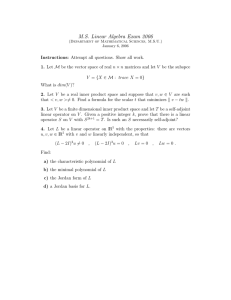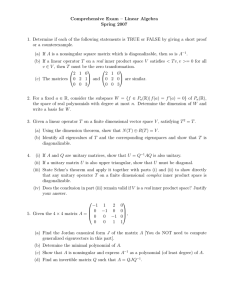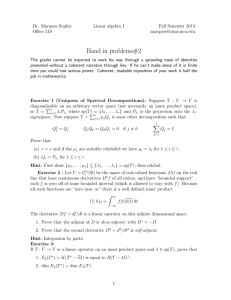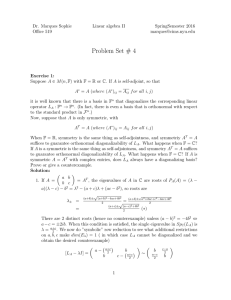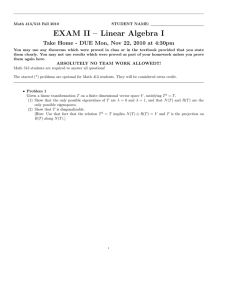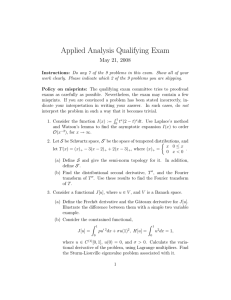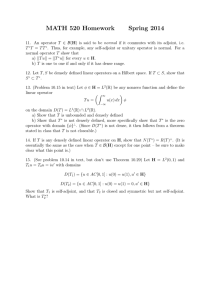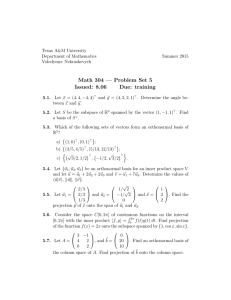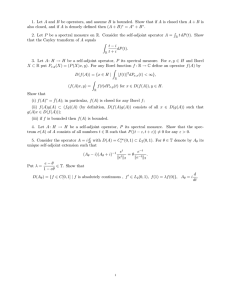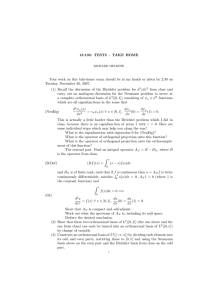Hand in problems#1
advertisement
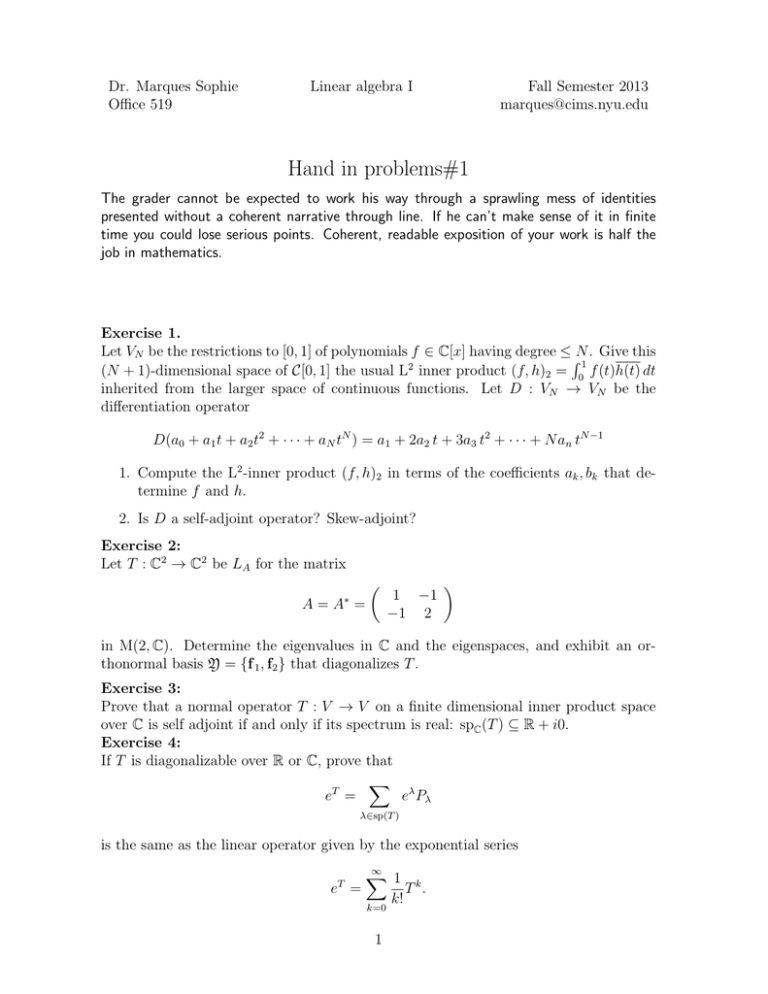
Dr. Marques Sophie
Office 519
Linear algebra I
Fall Semester 2013
marques@cims.nyu.edu
Hand in problems#1
The grader cannot be expected to work his way through a sprawling mess of identities
presented without a coherent narrative through line. If he can’t make sense of it in finite
time you could lose serious points. Coherent, readable exposition of your work is half the
job in mathematics.
Exercise 1.
Let VN be the restrictions to [0, 1] of polynomials f ∈ C[x] having degree ≤RN . Give this
1
(N + 1)-dimensional space of C[0, 1] the usual L2 inner product (f, h)2 = 0 f (t)h(t) dt
inherited from the larger space of continuous functions. Let D : VN → VN be the
differentiation operator
D(a0 + a1 t + a2 t2 + · · · + aN tN ) = a1 + 2a2 t + 3a3 t2 + · · · + N an tN −1
1. Compute the L2 -inner product (f, h)2 in terms of the coefficients ak , bk that determine f and h.
2. Is D a self-adjoint operator? Skew-adjoint?
Exercise 2:
Let T : C2 → C2 be LA for the matrix
∗
A=A =
1 −1
−1 2
in M(2, C). Determine the eigenvalues in C and the eigenspaces, and exhibit an orthonormal basis Y = {f 1 , f2 } that diagonalizes T .
Exercise 3:
Prove that a normal operator T : V → V on a finite dimensional inner product space
over C is self adjoint if and only if its spectrum is real: spC (T ) ⊆ R + i0.
Exercise 4:
If T is diagonalizable over R or C, prove that
X
eT =
e λ Pλ
λ∈sp(T )
is the same as the linear operator given by the exponential series
∞
X
1 k
T .
e =
k!
k=0
T
1
P
Hint: T k = λ λk Pλ . To discuss convergence of the operator-valued exponential series,
fix a basis X ⊆ V . Then a sequence of operators converges (Tn → T as n → ∞) in
matrix space M(N, C) if and only if the matrices converge entry-by-entry ( [Tn ]XX →
[T ]XX as n → ∞), as described in Chapter II, Section 5.3. Thus the partial sums
converge to a limit
Sn = I + T +
1
1 2
T + . . . + T n → S0 ,
2!
n!
in matrix space M(n, C) ⇔ (Sn )ij → (S0 )ij in C for all 1 ≤ i, j ≤ N .
Exercise 5:
Let T : C2 → C2 be the operator T = LA for
2 3
A=
3 4
Explain why T is self-adjoint with respect to the standard inner product (z, w) =
z1 w1 + z2 w2 on C2 . Then determine
(a) The spectrum spC (T ) = {λ1 , λ2 };
(b) The eigenspaces Eλ (T ) and find an orthonormal basis {f1 , f2 } in C2 that diagonalize T . Then
(c) Find a unitary matrix U ∗ U = I such that
λ1 0
∗
U AU =
0 λ2
where sp(T ) = {λ1 , λ2 }.
Exercise 6 (Uniquess of Spectral Decompositions): Suppose T : V → V is
diagonalizable
on an arbitrary vector space (not necesarily an inner product space),
Pr
so T = i=1 λi Pλi where sp(TP
) = {λ1 , . . . , λr } and Pλi is the projection onto the λi eigenspace. Now suppose T = sj=1 µj Qj is some other decomposition such that
Q2j
= Qj 6= 0
Qj Qk = Qk Qj = 0 if j 6= k
s
X
Qj = I
µi 6= µj , f or i 6= j
j=1
Prove that
(a) r = s and if the µj are suitably relabeled we have µi = λi for 1 ≤ i ≤ r.
(b) Qi = Pλi for 1 ≤ i ≤ r.
Hint: First show {µ1 , . . . , µs } ⊆ {λ1 , . . . , λr } = sp(T ); then relabel.
2
